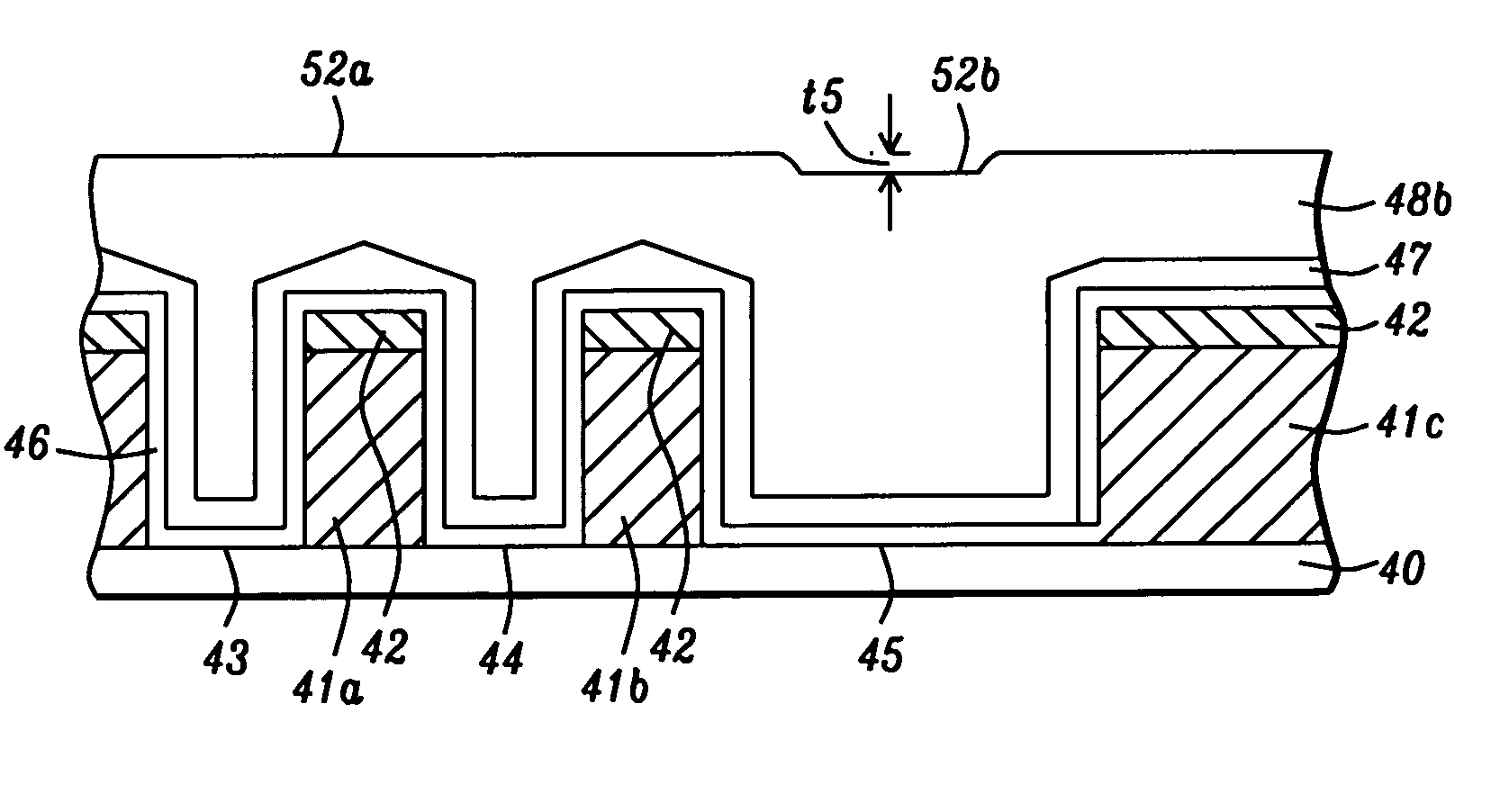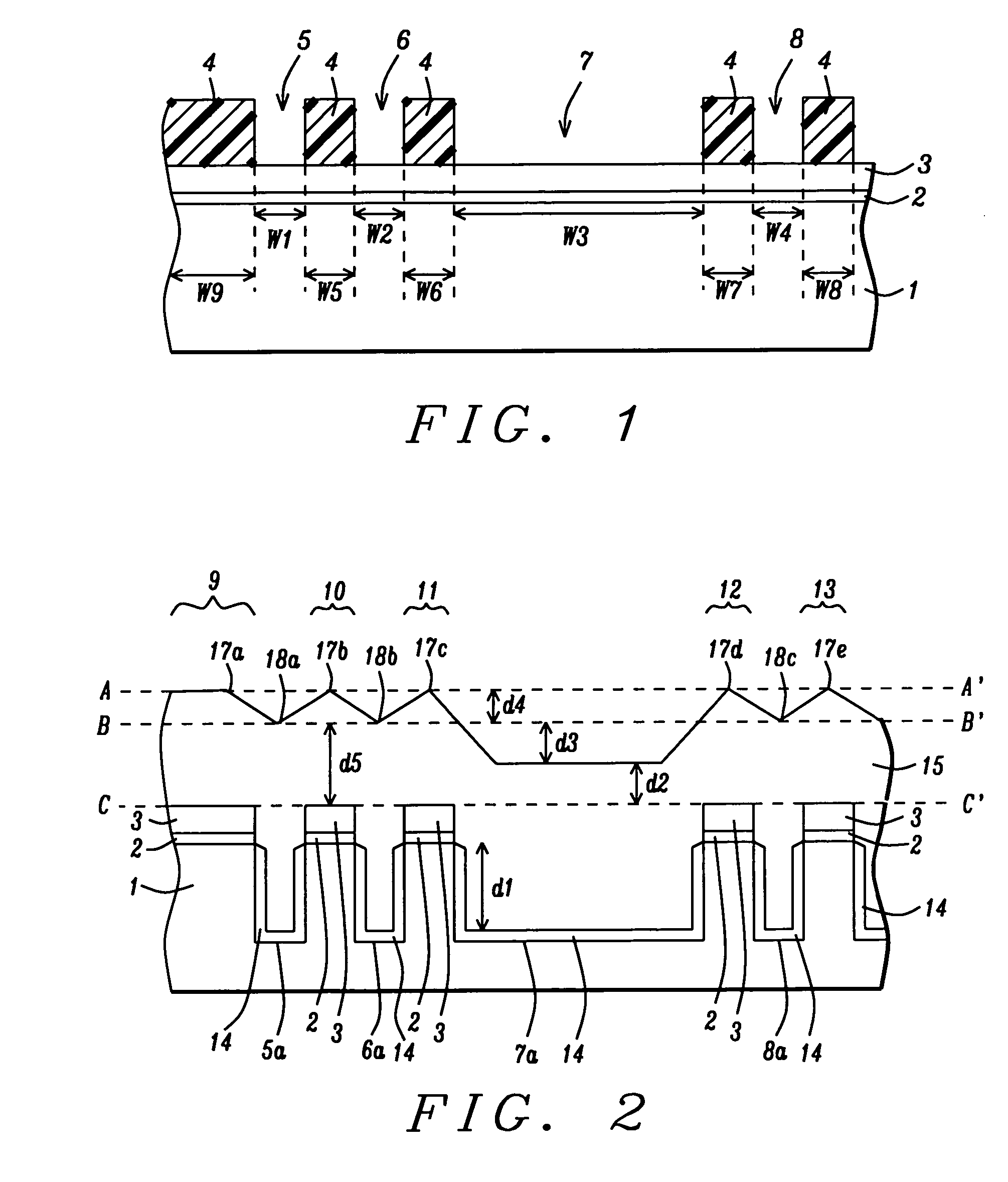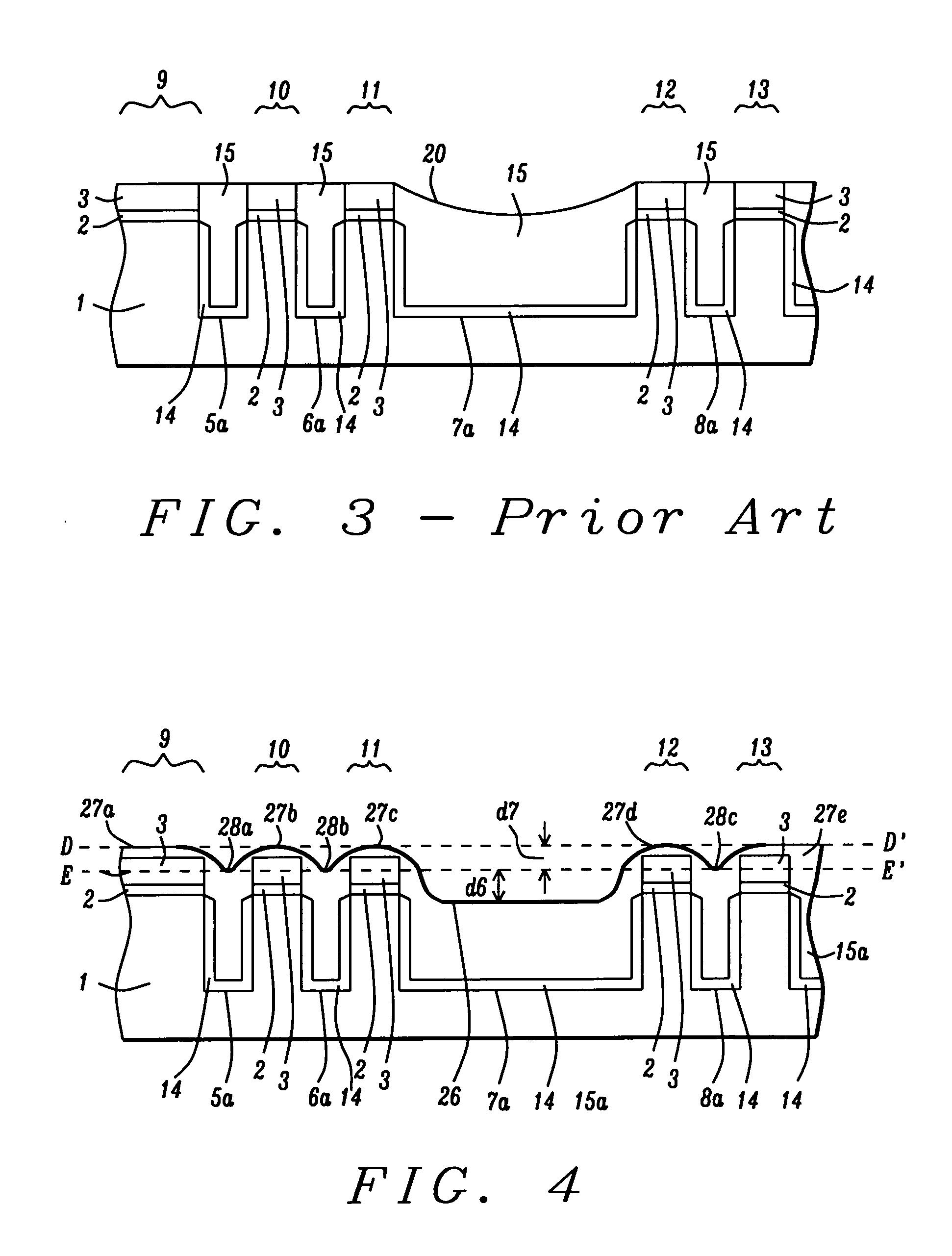Novel shallow trench isolation method for reducing oxide thickness variations at different pattern densities
a shallow trench and oxide thickness technology, applied in the direction of basic electric elements, semiconductor/solid-state device manufacturing, electric devices, etc., can solve the problems of difficult correction, difficult to reduce, and difficult to reduce thickness variation, so as to reduce thickness variation
- Summary
- Abstract
- Description
- Claims
- Application Information
AI Technical Summary
Benefits of technology
Problems solved by technology
Method used
Image
Examples
second embodiment
[0026] The present invention relates to a method of forming shallow trench isolation (STI) features with different pattern densities and with a uniform insulating layer thickness. The method is applicable to fabricating any device in which isolation regions are used to separate active regions on a substrate. In a second embodiment, the method may be used to form a uniform dielectric layer over a pattern of metal lines on a substrate. The drawings are for illustration only and are not intended to limit the scope of the invention. The figures are not necessarily drawn to scale and the relative sizes of the various features shown in the drawings may be different than those in an actual device.
first embodiment
[0027] the present invention is depicted in FIGS. 1-2 and 4-7. Referring to FIG. 1, a substrate 1 is shown that is typically monocrystalline silicon but optionally may be based on a silicon-germanium, silicon-on-insulator, or other semiconductor materials used in the art. The substrate 1 generally contains a substructure (not shown) that includes active and passive devices. A pad oxide layer 2 with a thickness of about 50 to 200 Angstroms and preferably about 90 Angstroms is grown on the substrate 1 by an oxidation process that may be a rapid thermal oxidation (RTO), for example. Next, a chemical vapor deposition (CVD) technique or a diffusion thermal process is used to deposit a silicon nitride layer 3 having a thickness from between 600 and 1800 Angstroms and preferably about 800 to 1200 Angstroms on the pad oxide layer 2.
[0028] A commercially available photoresist is spin coated and baked on the silicon nitride layer 3 to give a photoresist layer 4 that is subsequently patterned ...
PUM
 Login to View More
Login to View More Abstract
Description
Claims
Application Information
 Login to View More
Login to View More - R&D
- Intellectual Property
- Life Sciences
- Materials
- Tech Scout
- Unparalleled Data Quality
- Higher Quality Content
- 60% Fewer Hallucinations
Browse by: Latest US Patents, China's latest patents, Technical Efficacy Thesaurus, Application Domain, Technology Topic, Popular Technical Reports.
© 2025 PatSnap. All rights reserved.Legal|Privacy policy|Modern Slavery Act Transparency Statement|Sitemap|About US| Contact US: help@patsnap.com



